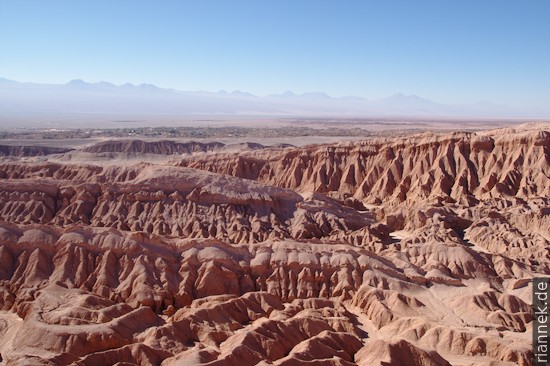
San Pedro de Atacama is a small oasis in the heart of the driest desert in the world. Dusty alleys with brown adobe walls, with trees in the courtyards. A sleepy village during the day, but in the afternoon the alleys fill with crowds of tourists and the hippie-inspired inhabitants who try to divert the flow of people to their respective restaurant or travel agency. To the east of San Pedro, the Andes, one volcano right next to the other: including the perfectly symmetrical Licancabur, a little further on the very active Laska steams away, and in the very south you can even glimpse the tip of Llullaillaco, the highest volcano to have erupted in historical times: amazing how far you can see here. South of San Pedro lies the Salar de Atacama, a huge expanse of salt, but not as white and pure as that of Uyuni: clay particles give it a reddish brown colour.
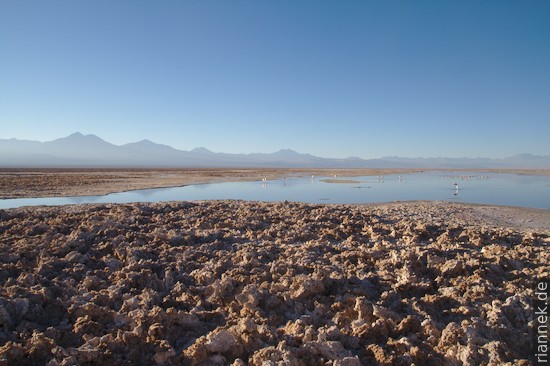
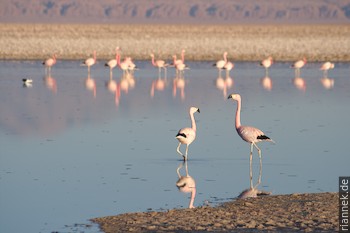
Immediately to the west is the small Cordillera del Sal, spectacular eroded folds of salt and mudstone, such as in the Valle de la Luna and the Valle de la Muerte. Several times I rent a mountain bike to go around all the spectacular viewpoints. Especially at sunset, when deep shadows lie in the canyons between strangely shaped hills and sand dunes and the Andes glow pink in the background, the landscape looks completely surreal. Here I also try my hand at sandboarding, but it doesn’t really work out with making curves…

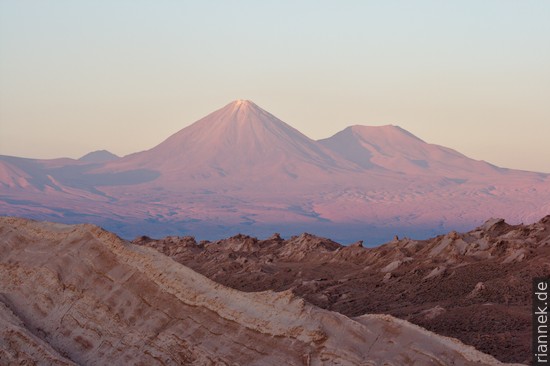
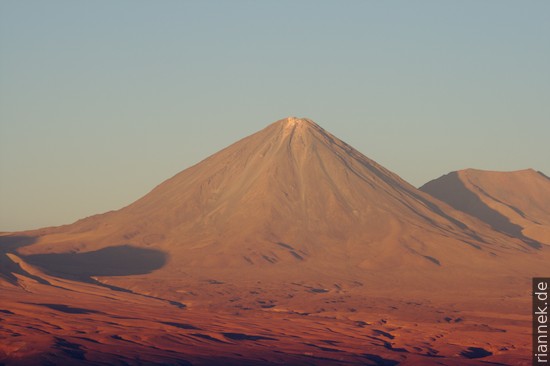
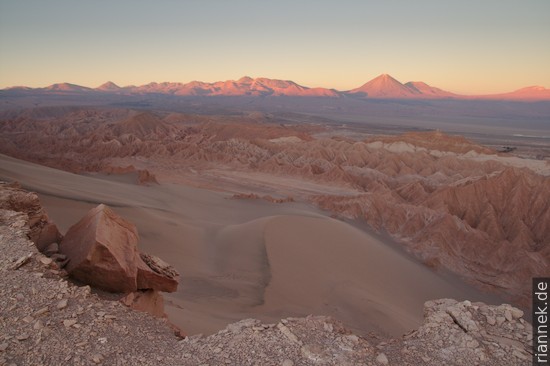
A tour takes me to the Tatio geyser, leaving at 4am to see the large geothermal field at an altitude of over 4000m just before sunrise, during the coldest part of the day. The fumaroles and geysers are not more active at this time (as is sometimes claimed), but the cold causes more water vapour to condense into white clouds. One of the geysers, for example, spouts a little more than 2 metres every 15 minutes or so, but the fountain hides in a dense cloud that immediately forms around it. Just before the sun bathes the valley with its hissing fumaroles, geysers and steaming, boiling hot springs in light, we unfortunately drive on again. I could have spared myself the following walk in valley with cacti, I have seen more beautiful ones in Bolivia.
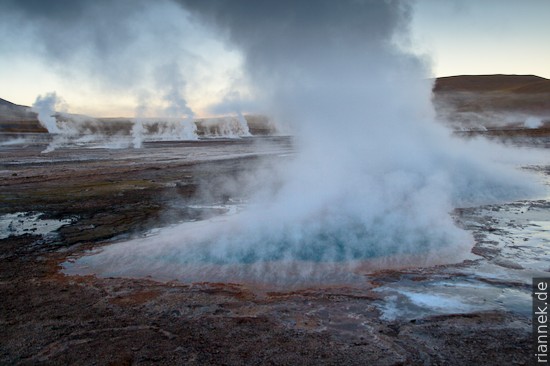
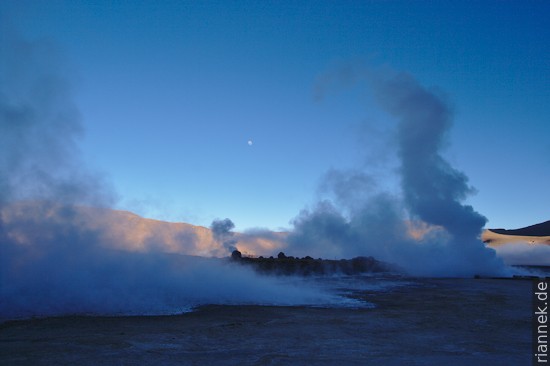
Another tour leads to the blue lakes Miscanti and Miñiques. The first stop is in the Salar de Atacama at a small lake with flamingos, in the foreground the salt of the salar eroded into sharp chunks by the rare rain. In the background, the Laska volcano is steaming away. Eventually, we curve up into the Andes, to the two lakes that lie at the feet of the volcanoes Miscanti and Miñiques and their neighbours at a little over 4000 m. I have already seen a few lagoons in the area, but each one has its own charm. The play of colours between blue water, golden yellow reflections of grassy hills and a large white ice floe is fascinating. However, the engine and gearbox of our minibus go haywire and we can be glad that we made it up there: The last few metres to San Pedro we actually have to change to another bus.
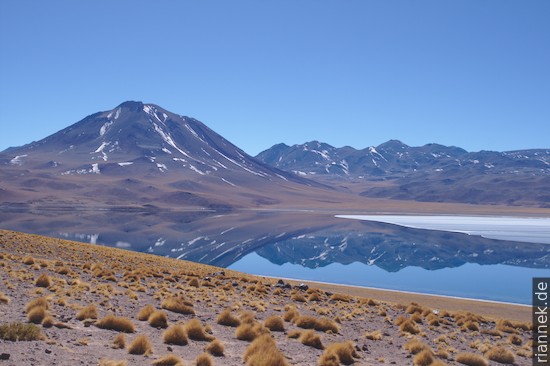
Read on
The Formation of Mountains
The World of Mineral Deposits
Travelogue Andes 2010
Sajama and Lauca
From Uyuni to San Pedro and ascent of Licancabur
Quebrada de Humahuaca (Argentina)